-
EXECUTIVE SUMMARY
-
MARKET INTRODUCTION
-
Definition
-
Scope of the Study
- Research Objective
- Assumptions
- Limitations
-
RESEARCH METHODOLOGY
-
Overview
-
Data Mining
-
Secondary Research
-
Primary Research
- Primary Interviews and Information Gathering Process
- Breakdown of Primary Respondents
-
Forecasting Model
-
Market Size Estimation
- Bottom-Up Approach
- Top-Down Approach
-
Data Triangulation
-
Validation
-
MARKET DYNAMICS
-
Overview
-
Drivers
-
Restraints
-
Opportunities
-
MARKET FACTOR ANALYSIS
-
Value Chain Analysis
-
Porter’s Five Forces Analysis
- Bargaining Power of Suppliers
- Bargaining Power of Buyers
- Threat of New Entrants
- Threat of Substitutes
- Intensity of Rivalry
-
COVID-19 Impact Analysis
- Market Impact Analysis
- Regional Impact
- Opportunity and Threat Analysis
-
GLOBAL MEDIUM-DUTY TRUCK MARKET, BY FUEL
-
Overview
-
Diesel
-
Natural Gas
-
Hybrid
-
Electric
-
Gasoline
-
GLOBAL MEDIUM-DUTY TRUCK MARKET, BY HORSEPOWER
-
Overview
-
Below 150 HP
-
150 HP-250 HP
-
Above 250 HP
-
GLOBAL MEDIUM-DUTY TRUCK MARKET, BY APPLICATION
-
Overview
-
Construction & Mining
-
Freight & Logistics
-
GLOBAL MEDIUM-DUTY TRUCK MARKET, BY REGION
-
Overview
-
North America
- US
- Canada
-
Europe
- Germany
- France
- UK
- Italy
- Spain
- Rest of Europe
-
Asia-Pacific
- China
- India
- Japan
- South Korea
- Australia
- Rest of Asia-Pacific
-
Rest of the World
- Middle East
- Africa
- Latin America
-
COMPETITIVE LANDSCAPE
-
Overview
-
Competitive Analysis
-
Market Share Analysis
-
Major Growth Strategy in the Global Medium-Duty Truck Market,
-
Competitive Benchmarking
-
Leading Players in Terms of Number of Developments in the Global Medium-Duty Truck Market,
-
Key developments and Growth Strategies
- New Product Launch/Service Deployment
- Merger & Acquisitions
- Joint Ventures
-
Major Players Financial Matrix
- Sales & Operating Income, 2022
- Major Players R&D Expenditure. 2022
-
COMPANY PROFILES
-
Ashok Leyland
- Company Overview
- Financial Overview
- Products Offered
- Key Developments
- SWOT Analysis
- Key Strategies
-
Eicher Motors Limited
- Company Overview
- Financial Overview
- Products Offered
- Key Developments
- SWOT Analysis
- Key Strategies
-
Tata Motors Limited
- Company Overview
- Financial Overview
- Products Offered
- Key Developments
- SWOT Analysis
- Key Strategies
-
Daimler Trucks
- Company Overview
- Financial Overview
- Products Offered
- Key Developments
- SWOT Analysis
- Key Strategies
-
Hino Motors
- Company Overview
- Financial Overview
- Products Offered
- Key Developments
- SWOT Analysis
- Key Strategies
-
BHARATBENZ
- Company Overview
- Financial Overview
- Products Offered
- Key Developments
- SWOT Analysis
- Key Strategies
-
Ford
- Company Overview
- Financial Overview
- Products Offered
- Key Developments
- SWOT Analysis
- Key Strategies
-
Isuzu Motors
- Company Overview
- Financial Overview
- Products Offered
- Key Developments
- SWOT Analysis
- Key Strategies
-
NAVISTAR
- Company Overview
- Financial Overview
- Products Offered
- Key Developments
- SWOT Analysis
- Key Strategies
-
Freightliner
- Company Overview
- Financial Overview
- Products Offered
- Key Developments
- SWOT Analysis
- Key Strategies
-
APPENDIX
-
References
-
Related Reports
-
-
LIST OF TABLES
-
GLOBAL MEDIUM-DUTY TRUCK MARKET, SYNOPSIS, 2018-2032
-
GLOBAL MEDIUM-DUTY TRUCK MARKET, ESTIMATES & FORECAST, 2018-2032 (USD BILLION)
-
GLOBAL MEDIUM-DUTY TRUCK MARKET, BY FUEL, 2018-2032 (USD BILLION)
-
GLOBAL MEDIUM-DUTY TRUCK MARKET, BY HORSEPOWER, 2018-2032 (USD BILLION)
-
GLOBAL MEDIUM-DUTY TRUCK MARKET, BY APPLICATION, 2018-2032 (USD BILLION)
-
NORTH AMERICA: MEDIUM-DUTY TRUCK MARKET, BY FUEL, 2018-2032 (USD BILLION)
-
NORTH AMERICA: MEDIUM-DUTY TRUCK MARKET, BY HORSEPOWER, 2018-2032 (USD BILLION)
-
NORTH AMERICA: MEDIUM-DUTY TRUCK MARKET, BY APPLICATION, 2018-2032 (USD BILLION)
-
US: MEDIUM-DUTY TRUCK MARKET, BY FUEL, 2018-2032 (USD BILLION)
-
US: MEDIUM-DUTY TRUCK MARKET, BY HORSEPOWER, 2018-2032 (USD BILLION)
-
US: MEDIUM-DUTY TRUCK MARKET, BY APPLICATION, 2018-2032 (USD BILLION)
-
CANADA: MEDIUM-DUTY TRUCK MARKET, BY FUEL, 2018-2032 (USD BILLION)
-
CANADA: MEDIUM-DUTY TRUCK MARKET, BY HORSEPOWER, 2018-2032 (USD BILLION)
-
CANADA: MEDIUM-DUTY TRUCK MARKET, BY APPLICATION, 2018-2032 (USD BILLION)
-
EUROPE: MEDIUM-DUTY TRUCK MARKET, BY FUEL, 2018-2032 (USD BILLION)
-
EUROPE: MEDIUM-DUTY TRUCK MARKET, BY HORSEPOWER, 2018-2032 (USD BILLION)
-
EUROPE: MEDIUM-DUTY TRUCK MARKET, BY APPLICATION, 2018-2032 (USD BILLION)
-
GERMANY: MEDIUM-DUTY TRUCK MARKET, BY FUEL, 2018-2032 (USD BILLION)
-
GERMANY: MEDIUM-DUTY TRUCK MARKET, BY HORSEPOWER, 2018-2032 (USD BILLION)
-
GERMANY: MEDIUM-DUTY TRUCK MARKET, BY APPLICATION, 2018-2032 (USD BILLION)
-
FRANCE: MEDIUM-DUTY TRUCK MARKET, BY FUEL, 2018-2032 (USD BILLION)
-
FRANCE: MEDIUM-DUTY TRUCK MARKET, BY HORSEPOWER, 2018-2032 (USD BILLION)
-
FRANCE: MEDIUM-DUTY TRUCK MARKET, BY APPLICATION, 2018-2032 (USD BILLION)
-
ITALY: MEDIUM-DUTY TRUCK MARKET, BY FUEL, 2018-2032 (USD BILLION)
-
ITALY: MEDIUM-DUTY TRUCK MARKET, BY HORSEPOWER, 2018-2032 (USD BILLION)
-
ITALY: MEDIUM-DUTY TRUCK MARKET, BY APPLICATION, 2018-2032 (USD BILLION)
-
SPAIN: MEDIUM-DUTY TRUCK MARKET, BY FUEL, 2018-2032 (USD BILLION)
-
SPAIN: MEDIUM-DUTY TRUCK MARKET, BY HORSEPOWER, 2018-2032 (USD BILLION)
-
SPAIN: MEDIUM-DUTY TRUCK MARKET, BY APPLICATION, 2018-2032 (USD BILLION)
-
UK: MEDIUM-DUTY TRUCK MARKET, BY FUEL, 2018-2032 (USD BILLION)
-
UK: MEDIUM-DUTY TRUCK MARKET, BY HORSEPOWER, 2018-2032 (USD BILLION)
-
UK: MEDIUM-DUTY TRUCK MARKET, BY APPLICATION, 2018-2032 (USD BILLION)
-
REST OF EUROPE: MEDIUM-DUTY TRUCK MARKET, BY FUEL, 2018-2032 (USD BILLION)
-
REST OF EUROPE: MEDIUM-DUTY TRUCK MARKET, BY HORSEPOWER, 2018-2032 (USD BILLION)
-
REST OF EUROPE: MEDIUM-DUTY TRUCK MARKET, BY APPLICATION, 2018-2032 (USD BILLION)
-
ASIA-PACIFIC: MEDIUM-DUTY TRUCK MARKET, BY FUEL, 2018-2032 (USD BILLION)
-
ASIA-PACIFIC: MEDIUM-DUTY TRUCK MARKET, BY HORSEPOWER, 2018-2032 (USD BILLION)
-
ASIA-PACIFIC: MEDIUM-DUTY TRUCK MARKET, BY APPLICATION, 2018-2032 (USD BILLION)
-
JAPAN: MEDIUM-DUTY TRUCK MARKET, BY FUEL, 2018-2032 (USD BILLION)
-
JAPAN: MEDIUM-DUTY TRUCK MARKET, BY HORSEPOWER, 2018-2032 (USD BILLION)
-
JAPAN: MEDIUM-DUTY TRUCK MARKET, BY APPLICATION, 2018-2032 (USD BILLION)
-
CHINA: MEDIUM-DUTY TRUCK MARKET, BY FUEL, 2018-2032 (USD BILLION)
-
CHINA: MEDIUM-DUTY TRUCK MARKET, BY HORSEPOWER, 2018-2032 (USD BILLION)
-
CHINA: MEDIUM-DUTY TRUCK MARKET, BY APPLICATION, 2018-2032 (USD BILLION)
-
INDIA: MEDIUM-DUTY TRUCK MARKET, BY FUEL, 2018-2032 (USD BILLION)
-
INDIA: MEDIUM-DUTY TRUCK MARKET, BY HORSEPOWER, 2018-2032 (USD BILLION)
-
INDIA: MEDIUM-DUTY TRUCK MARKET, BY APPLICATION, 2018-2032 (USD BILLION)
-
AUSTRALIA: MEDIUM-DUTY TRUCK MARKET, BY FUEL, 2018-2032 (USD BILLION)
-
AUSTRALIA: MEDIUM-DUTY TRUCK MARKET, BY HORSEPOWER, 2018-2032 (USD BILLION)
-
AUSTRALIA: MEDIUM-DUTY TRUCK MARKET, BY APPLICATION, 2018-2032 (USD BILLION)
-
SOUTH KOREA: MEDIUM-DUTY TRUCK MARKET, BY FUEL, 2018-2032 (USD BILLION)
-
SOUTH KOREA: MEDIUM-DUTY TRUCK MARKET, BY HORSEPOWER, 2018-2032 (USD BILLION)
-
SOUTH KOREA: MEDIUM-DUTY TRUCK MARKET, BY APPLICATION, 2018-2032 (USD BILLION)
-
REST OF ASIA-PACIFIC: MEDIUM-DUTY TRUCK MARKET, BY FUEL, 2018-2032 (USD BILLION)
-
REST OF ASIA-PACIFIC: MEDIUM-DUTY TRUCK MARKET, BY HORSEPOWER, 2018-2032 (USD BILLION)
-
REST OF ASIA-PACIFIC: MEDIUM-DUTY TRUCK MARKET, BY APPLICATION, 2018-2032 (USD BILLION)
-
REST OF THE WORLD: MEDIUM-DUTY TRUCK MARKET, BY FUEL, 2018-2032 (USD BILLION)
-
REST OF THE WORLD: MEDIUM-DUTY TRUCK MARKET, BY HORSEPOWER, 2018-2032 (USD BILLION)
-
REST OF THE WORLD: MEDIUM-DUTY TRUCK MARKET, BY APPLICATION, 2018-2032 (USD BILLION)
-
MIDDLE EAST: MEDIUM-DUTY TRUCK MARKET, BY FUEL, 2018-2032 (USD BILLION)
-
MIDDLE EAST: MEDIUM-DUTY TRUCK MARKET, BY HORSEPOWER, 2018-2032 (USD BILLION)
-
MIDDLE EAST: MEDIUM-DUTY TRUCK MARKET, BY APPLICATION, 2018-2032 (USD BILLION)
-
AFRICA: MEDIUM-DUTY TRUCK MARKET, BY FUEL, 2018-2032 (USD BILLION)
-
AFRICA: MEDIUM-DUTY TRUCK MARKET, BY HORSEPOWER, 2018-2032 (USD BILLION)
-
AFRICA: MEDIUM-DUTY TRUCK MARKET, BY APPLICATION, 2018-2032 (USD BILLION)
-
LATIN AMERICA: MEDIUM-DUTY TRUCK MARKET, BY FUEL, 2018-2032 (USD BILLION)
-
LATIN AMERICA: MEDIUM-DUTY TRUCK MARKET, BY HORSEPOWER, 2018-2032 (USD BILLION)
-
LATIN AMERICA: MEDIUM-DUTY TRUCK MARKET, BY APPLICATION, 2018-2032 (USD BILLION)
-
LIST OF FIGURES
-
RESEARCH PROCESS
-
MARKET STRUCTURE FOR THE GLOBAL MEDIUM-DUTY TRUCK MARKET
-
MARKET DYNAMICS FOR THE GLOBAL MEDIUM-DUTY TRUCK MARKET
-
GLOBAL MEDIUM-DUTY TRUCK MARKET, SHARE (%), BY FUEL, 2022
-
GLOBAL MEDIUM-DUTY TRUCK MARKET, SHARE (%), BY HORSEPOWER, 2022
-
GLOBAL MEDIUM-DUTY TRUCK MARKET, SHARE (%), BY APPLICATION, 2022
-
GLOBAL MEDIUM-DUTY TRUCK MARKET, SHARE (%), BY APPLICATION, 2022
-
GLOBAL MEDIUM-DUTY TRUCK MARKET, SHARE (%), BY REGION, 2022
-
NORTH AMERICA: MEDIUM-DUTY TRUCK MARKET, SHARE (%), BY REGION, 2022
-
EUROPE: MEDIUM-DUTY TRUCK MARKET, SHARE (%), BY REGION, 2022
-
ASIA-PACIFIC: MEDIUM-DUTY TRUCK MARKET, SHARE (%), BY REGION, 2022
-
REST OF THE WORLD: MEDIUM-DUTY TRUCK MARKET, SHARE (%), BY REGION, 2022
-
GLOBAL MEDIUM-DUTY TRUCK MARKET: COMPANY SHARE ANALYSIS, 2022 (%)
-
ASHOK LEYLAND: FINANCIAL OVERVIEW SNAPSHOT
-
ASHOK LEYLAND: SWOT ANALYSIS
-
EICHER MOTORS LIMITED: FINANCIAL OVERVIEW SNAPSHOT
-
EICHER MOTORS LIMITED: SWOT ANALYSIS
-
TATA MOTORS LIMITED: FINANCIAL OVERVIEW SNAPSHOT
-
TATA MOTORS LIMITED: SWOT ANALYSIS
-
DAIMLER TRUCKS: FINANCIAL OVERVIEW SNAPSHOT
-
DAIMLER TRUCKS: SWOT ANALYSIS
-
HINO MOTORS: FINANCIAL OVERVIEW SNAPSHOT
-
HINO MOTORS: SWOT ANALYSIS
-
BHARATBENZ: FINANCIAL OVERVIEW SNAPSHOT
-
BHARATBENZ: SWOT ANALYSIS
-
FORD: FINANCIAL OVERVIEW SNAPSHOT
-
FORD: SWOT ANALYSIS
-
ISUZU MOTORS: FINANCIAL OVERVIEW SNAPSHOT
-
ISUZU MOTORS: SWOT ANALYSIS
-
NAVISTAR: FINANCIAL OVERVIEW SNAPSHOT
-
NAVISTAR: SWOT ANALYSIS
-
FREIGHTLINER: FINANCIAL OVERVIEW SNAPSHOT
-
FREIGHTLINER: SWOT ANALYSIS
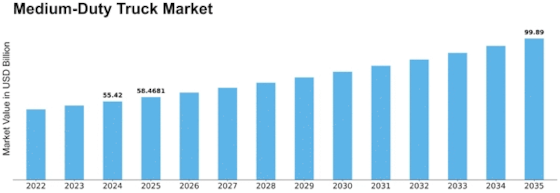

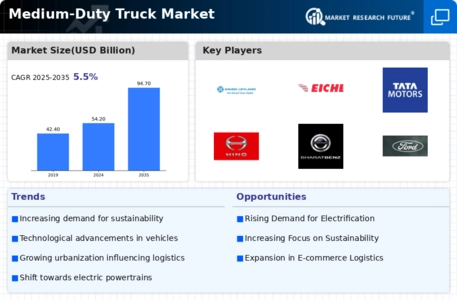


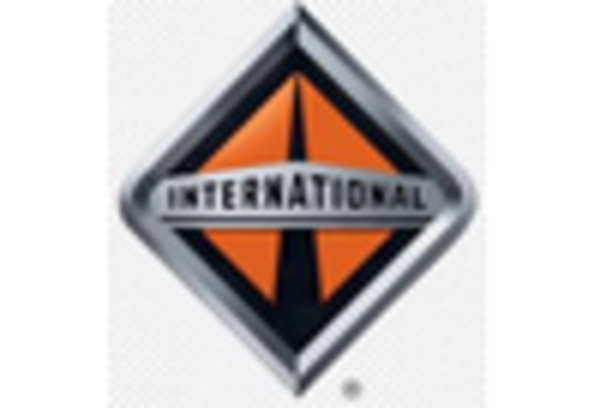
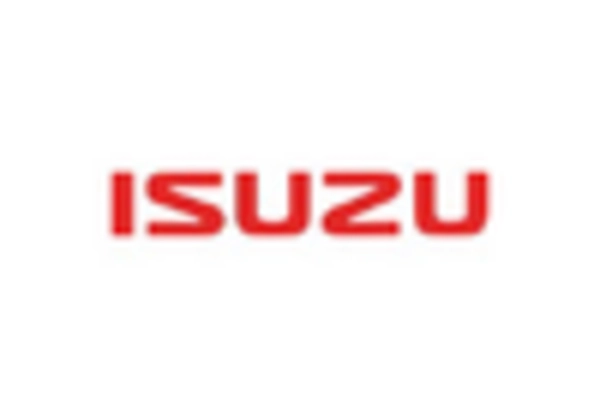
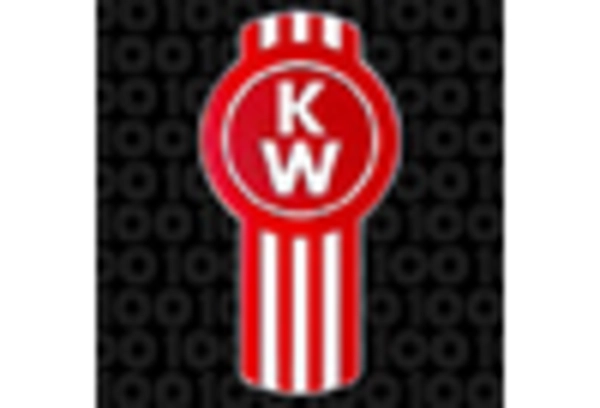
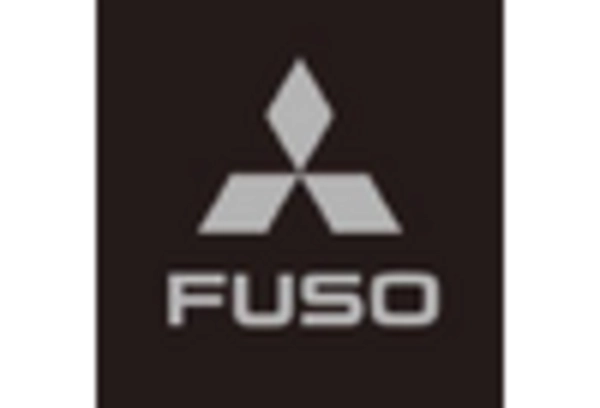









Leave a Comment